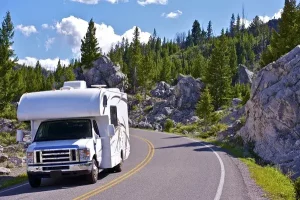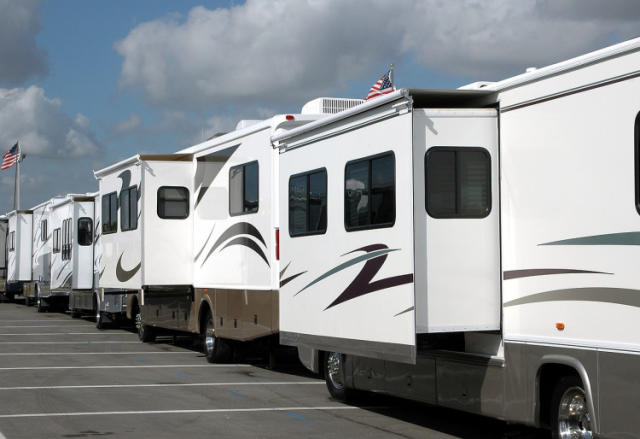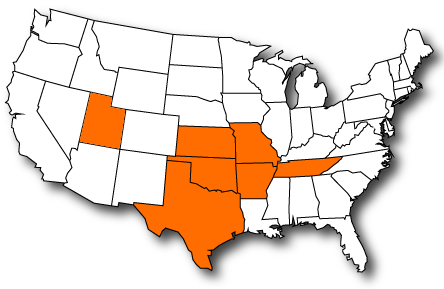
Recreational Vehicles (RVs) are an excellent way to explore the natural beauty of Arkansas, from the Ozark Mountains to the scenic byways and national parks. However, RV owners face unique challenges, including the potential for mold growth.
Mold can be more than a mere nuisance; it can cause serious health issues and damage your RV. Understanding whether RV insurance covers mold in Arkansas is crucial for every RV owner.
In this blog, we will delve into the specifics of RV insurance coverage for mold, factors affecting this coverage, and practical steps to prevent mold growth in your RV.
Understanding RV Insurance Coverage
RV insurance, much like auto or home insurance, provides financial protection against various risks, including accidents, theft, and natural disasters in Arkansas.
Policies vary widely, but they typically offer a combination of collision, comprehensive, and liability coverage. Different risks are covered by each type of coverage:
-
- Collision Coverage: This covers damage to your recreational vehicle if it collides with another car or item.
- Comprehensive Coverage: Protects against damage not caused by collisions, including theft, vandalism, and natural disasters.
- Liability Coverage: Protects against legal liability for injuries or property damage caused by the RV owner.
Mold and Recreational Vehicle Insurance: A Complex Relationship
When it comes to mold, RV insurance coverage is not straightforward. Mold damage falls into a gray area that can be influenced by several factors, including the source of the mold, the specifics of the insurance policy, and the timely reporting and maintenance of the RV in Arkansas. Here’s what you need to know:
Policy Inclusions and Exclusions:
- Standard Exclusions: Many standard RV insurance policies explicitly exclude mold damage. This exclusion is often rooted in the fact that mold is typically considered a maintenance issue, rather than a sudden and accidental event.
- Comprehensive Coverage: Some comprehensive policies might cover mold damage if it results from a covered peril. For example, if a storm damages your RV, leading to water intrusion and subsequent mold growth, the mold damage might be covered.
- Endorsements and Riders: Some insurance providers offer optional endorsements or riders that can be added to a policy to cover mold damage. These endorsements come at an additional cost but provide peace of mind against mold-related issues.
Source of Mold:
- Maintenance Issues: Mold resulting from neglected maintenance, such as a longstanding leak, is typically not covered. Insurance policies generally require RV owners to perform regular maintenance to prevent such issues.
- Sudden Events: If mold growth results from a sudden, unexpected event (e.g., a burst pipe), it may be covered under comprehensive insurance, provided the event itself is a covered peril.
Timeliness of Reporting:
- Immediate Action: Insurance claims for mold damage are more likely to be successful if the damage is reported promptly. Delayed reporting can lead to disputes over the cause and extent of the damage.
Factors Affecting Mold Coverage in Arkansas
Arkansas’ climate can be conducive to mold growth, especially during the humid summer months. Several factors unique to the state can influence mold coverage under RV insurance:
- Climate and Weather Conditions: Arkansas experiences high humidity, heavy rainfall, and frequent storms, all of which can contribute to mold growth in RVs. Ensuring your RV is properly sealed and ventilated is crucial.
- Storage Conditions: How and where you store your RV in Arkansas can impact the risk of mold. Storing your RV in a damp or poorly ventilated area increases the likelihood of mold issues.
- Preventive Measures: Insurance providers may consider the preventive measures taken by RV owners, such as using dehumidifiers, regularly inspecting for leaks, and promptly addressing any water damage.
Practical Steps to Prevent Mold in Your RV
Preventing mold in your RV is not only essential for maintaining a healthy living environment but also for ensuring that your insurance claims are not denied due to lack of maintenance. Here are some practical steps to reduce the risk of mold:
- Regular Inspections: Conduct thorough inspections of your RV at least twice a year. Pay special attention to areas prone to moisture, such as windows, doors, roofs, and plumbing fixtures.
- Seal Leaks Promptly: Address any leaks or signs of water intrusion immediately. This includes sealing windows, doors, and roof seams, and repairing any damaged caulking.
- Control Humidity: Use dehumidifiers, especially during the humid months in Arkansas. Keep the humidity level inside your RV below 60% to inhibit mold growth.
- Ventilation: Ensure proper ventilation in your RV, particularly in areas like the kitchen and bathroom where moisture is more likely to accumulate. Utilize exhaust fans when cooking or taking a bath.
- Clean Regularly: Regularly clean your RV, focusing on areas where moisture tends to accumulate. Use mold-inhibiting cleaning products and ensure surfaces are dry.
- Use Moisture Absorbers: Place moisture-absorbing products, such as silica gel packs or moisture-absorbing canisters, in your RV to reduce humidity levels.
Filing an RV Insurance Claim for Mold Damage in Arkansas
If you discover mold in your RV and believe it may be covered by your insurance, follow these steps to file a claim:
- Document the Damage: Take detailed photographs and videos of the mold damage. Document the extent of the mold, any visible sources of moisture, and the condition of the affected areas.
- Review Your Policy: Carefully review your insurance policy to understand the coverage limits and exclusions related to mold damage. Look for any endorsements or riders that might cover mold.
- Contact Your Insurance Provider: Inform your insurance company right away. Provide them with the documentation of the damage and any relevant maintenance records.
- Get a Professional Assessment: Consider hiring a professional to assess the mold damage and determine the underlying cause. This could offer proof to back up your claim.
- Follow-up: Throughout the claims procedure, maintain continuous communication with your insurance company. When asked, be ready to provide additional information or supporting documents.
Conclusion
Mold in an RV can be a serious issue, especially in a humid state like Arkansas. Understanding whether your Recreational Vehicle insurance in Arkansas covers mold requires a thorough review of your policy and awareness of the conditions under which mold damage might be covered.
By taking preventive measures and maintaining your RV diligently, you can reduce the risk of mold and increase the likelihood of a successful insurance claim if mold damage does occur.
For Arkansas RV owners, staying informed and proactive is key to enjoying the many adventures that the Natural State has to offer without the worry of mold-related complications.
Stay protected and informed. Contact G&G Independent Insurance today to review your RV policy and ensure you’re covered for mold-related issues.


